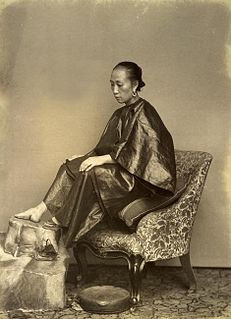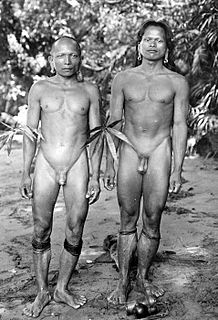 W
WCropping is the removal of a person's ears as an act of physical punishment. It was performed along with the pillorying or immobilisation in the stocks, and sometimes alongside punishments such as branding or fines. The punishment is described in Victor Hugo's The Hunchback of Notre-Dame.
 W
WFoot binding was the Chinese custom of breaking and tightly binding the feet of young girls in order to change their shape and size. Feet altered by foot binding were known as lotus feet, and the shoes made for these feet were known as lotus shoes. In late imperial China, bound feet were considered a status symbol and a mark of beauty. However, foot binding was a painful practice that limited the mobility of women and resulted in lifelong disabilities.
 W
WThe terms genital modification and genital mutilation can refer to permanent or temporary changes to human sex organs. Some forms of genital alteration are performed on adults with their informed consent at their own behest, usually for aesthetic reasons or to enhance stimulation. However, other forms are performed on people who do not give informed consent, including infants or children. Any of these procedures may be considered modifications or mutilations in different cultural contexts and by different groups of people.
 W
WGueules cassées is a French expression for facially disfigured servicemen that originated in World War I. Colonel Yves Picot is said to have coined the term when he was refused entry to a gathering for the war-disabled.
 W
WHuman branding or stigmatizing is the process by which a mark, usually a symbol or ornamental pattern, is burned into the skin of a living person, with the intention that the resulting scar makes it permanent. This is performed using a hot or very cold branding iron. It therefore uses the physical techniques of livestock branding on a human, either with consent as a form of body modification; or under coercion, as a punishment or to identify an enslaved, oppressed, or otherwise controlled person. It may also be practiced as a "rite of passage", e.g. within a tribe, or to signify membership of or acceptance into an organization.
 W
WMutilation was a common method of punishment for criminals in the Byzantine Empire, but it also had a role in the empire's political life. By blinding a rival, one would not only restrict their mobility but also make it almost impossible for them to lead an army into battle, then an important part of taking control of the empire. Castration was also used to eliminate potential opponents. In the Byzantine Empire, for a man to be castrated meant that he was no longer a man—half-dead, "life that was half death". Castration also eliminated any chance of heirs being born to threaten either the emperor’s or the emperor's children's place at the throne. Other mutilations were the severing of the nose (rhinotomy) or the amputating of limbs.
 W
WThe criminal law in the Sasanian Empire followed the same model as the Zoroastrian law, which had the intention to punish the individual in order to save the latters soul from the otherworldly consequences of the offense. The purpose of punishment in Zoroastrian law was to save the condemned's soul from the supernatural consequences of lawbreaking. People who were punished in life were purged of their sins and spared divine punishment after death. Due to punitive punishment being considered beneficial, torture was rationalized and confessions could be extorted during torture. The chronicle of Matigan-i Hazar Datistan makes mention of punishments in Zoroastrian law.